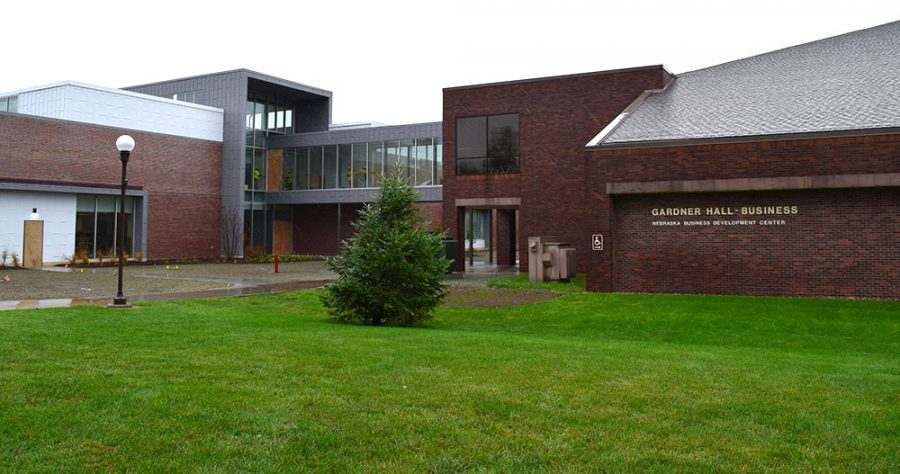The difference 102 years makes when a pandemic strikes
WSC in the time of Spanish Flu
April 27, 2020
In 1918, the United States was hit with a catastrophic pandemic known as the Spanish Flu. The results were much like that of COVID-19. Even with 102 years in between the two pandemics, campus’ response has been relatively similar. (As a side note: In 1918, WSC was known as Wayne State Normal and The Wayne Stater was the Goldenrod.)
Quite obviously, internet and technology have changed, causing much of the difference.
“Obviously campus was a lot smaller back then, we had an infirmary, and we were on war footing as a country,” said Jay Collier, director of college relations. “A lot of people were gone… we were basically a women’s college at that point because all of the men were off fighting in the war.”
With old documentation from campus in 1918, Marcus Schlichter provided excerpts of information. During the Spanish Flu, the country was also engaged in World War I. At this time students and faculty were actively taking part in supporting the war efforts.
The government had asked citizens to conserve food as well as suggesting planting their own gardens.
In an excerpt from Schlichter, there had been a garden – a “war garden” – planted on the southwest corner of campus, about where the Willow Bowl is presently. There were seven squads made up of 10 students and faculty to care for the garden, and each were responsible for an area of 21 by 150 feet.
There were primarily women attending school on campus at the time, as men were fighting in the war. On Oct. 7, 1918, the men started to arrive back on campus. This arrival came around the same time as the arrival of the Spanish Flu in Wayne. The next few weeks were spent preparing – “School stopped, the Faculty became nurses, and the days were long and dull for the boys.”
During this time not many people were on campus, much like WSC currently. Campus has been online only since Mar. 23, 2020, and will continue through the end of the semester.
“Now we are a little more sophisticated about isolation than they were then,” Collier said.
Recently, citizens have been experiencing isolation, social distancing, and no allowance of public gatherings. This is not unlike the Spanish Flu response.
“There were state-wide bans on public gatherings,” Collier said.
An excerpt from the Oct. 17, 1918 issue of the Wayne Herald said there had been meetings held through the weekend and it had been decided that city schools were not to open, and the State Normal there had been several cases of the influenza suspending the activities of the institution for the week (excluding the boys’ military unit activities). The students had been dismissed that first week and they were allowed to go home. They were hopeful the campus activities would resume the following Tuesday. Churches and auxiliary societies were also suspended for the week.
“It is hoped strict precautionary steps will put a speedy end to the epidemic.”
Collier said the Herald has continued to do their great work with getting necessary information out there like they did over 100 years ago. He also said that the Stater has gotten a crash course in how to handle situations like this, and that the staff has done a great job to continue to provide the campus and community information.
“The news remains the news, whether we’re talking now or 102 years ago,” Collier said.
The Wayne Herald had also written that the State Normal used part of the Physical-Industrial Building as a hospital for sick students. People from the town as well as faculty were helping as nurses.
Collier said it was heartening to know that of the 35 people on campus that had gotten affected, all 35 recovered.
“The dormitories remained open, some students stayed on campus,” Collier said. “The difference being we’re able to continue to conduct classes while they were not, thanks to online education.”
Collier said it is nice that learning and teaching can continue, even though it is not ideal. He said the faculty and staff deserve a “tremendous amount of credit” for being able to make it work the best that they can.
“Communication is so much better now than what they would have been faced with then,” Collier said. “It had to be tough to be coming out of a war when people naturally want to come together to celebrate the end of a war, and then WHAM, you are hit with this massive flu pandemic.”
Collier said he had read accounts of people holding gatherings and parades with thousands of people getting sick and dying from the spread of the flu because they had chosen to come together when they likely should not have.
The campus remained closed until the week of Nov. 7, 1918. Due to the fact there had been no classes commencing, The Goldenrod did not run from Oct. 14 to Nov. 4.
An excerpt from the Nov. 4 issue of The Goldenrod said the North Hall had become a deserted place compared to three weeks prior.
The numbers for COVID-19 positive results have gone up, but Wayne County stays at their one count – knock on wood. The numbers will continue to change as the weeks go by.
Collier said there are yet to be decisions made for the fall semester. He would like to remind people to listen to what President Rames said in her video about staying safe and healthy, as well as following the recommendations of the governor. He said he hopes everyone can stay engaged and finish out the semester strong.









